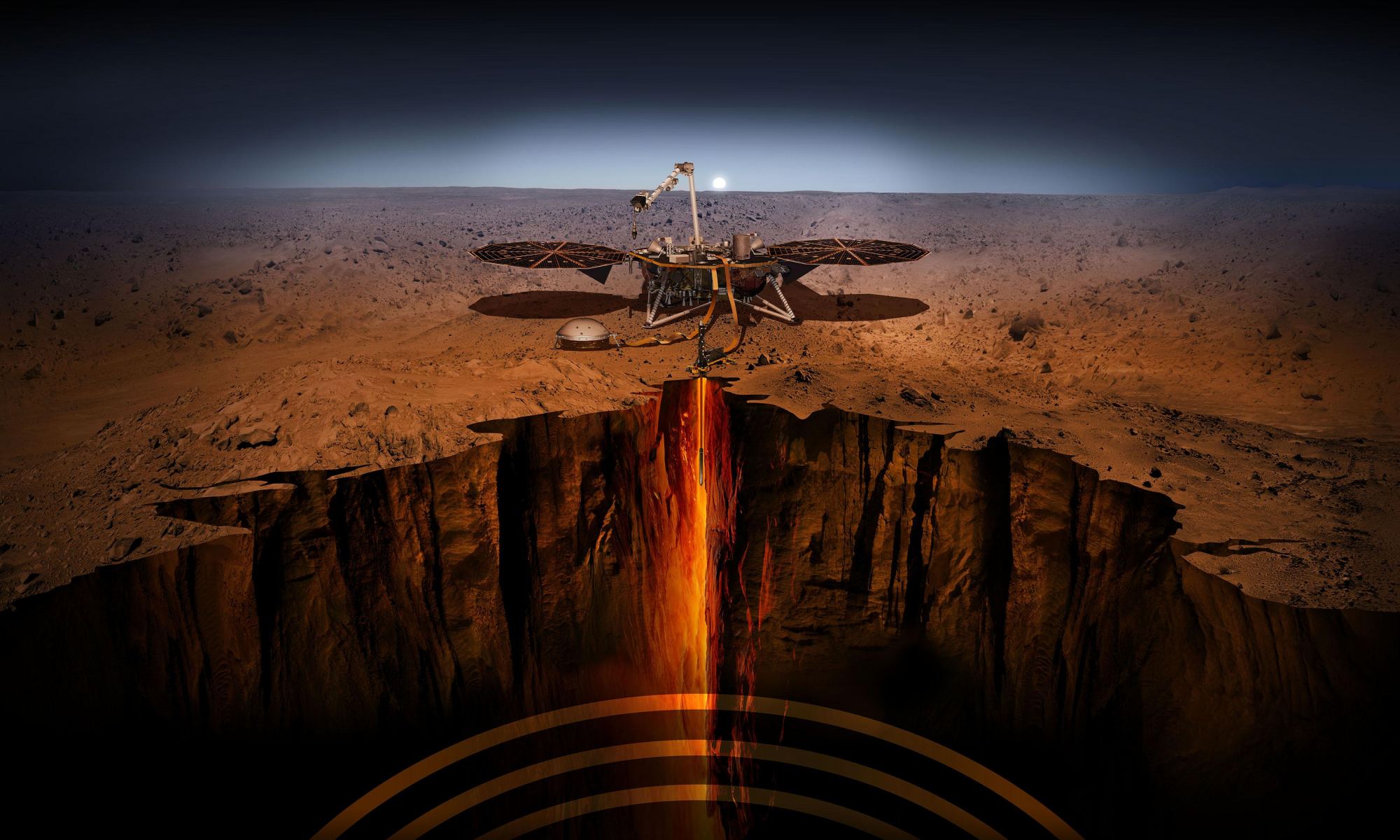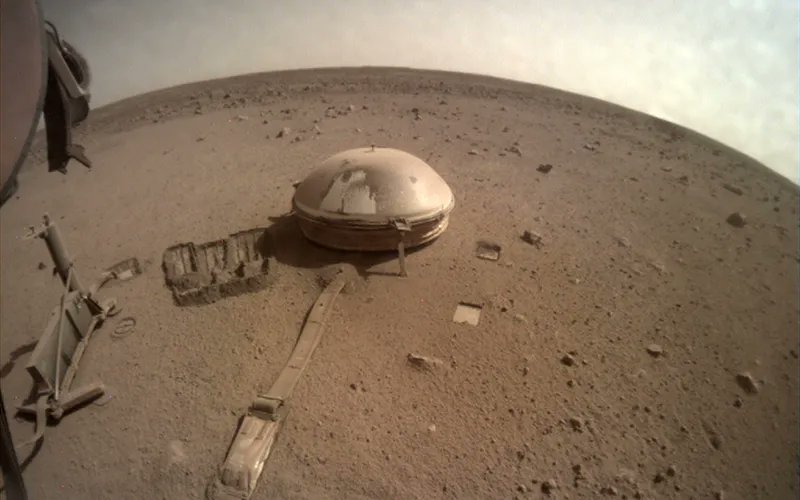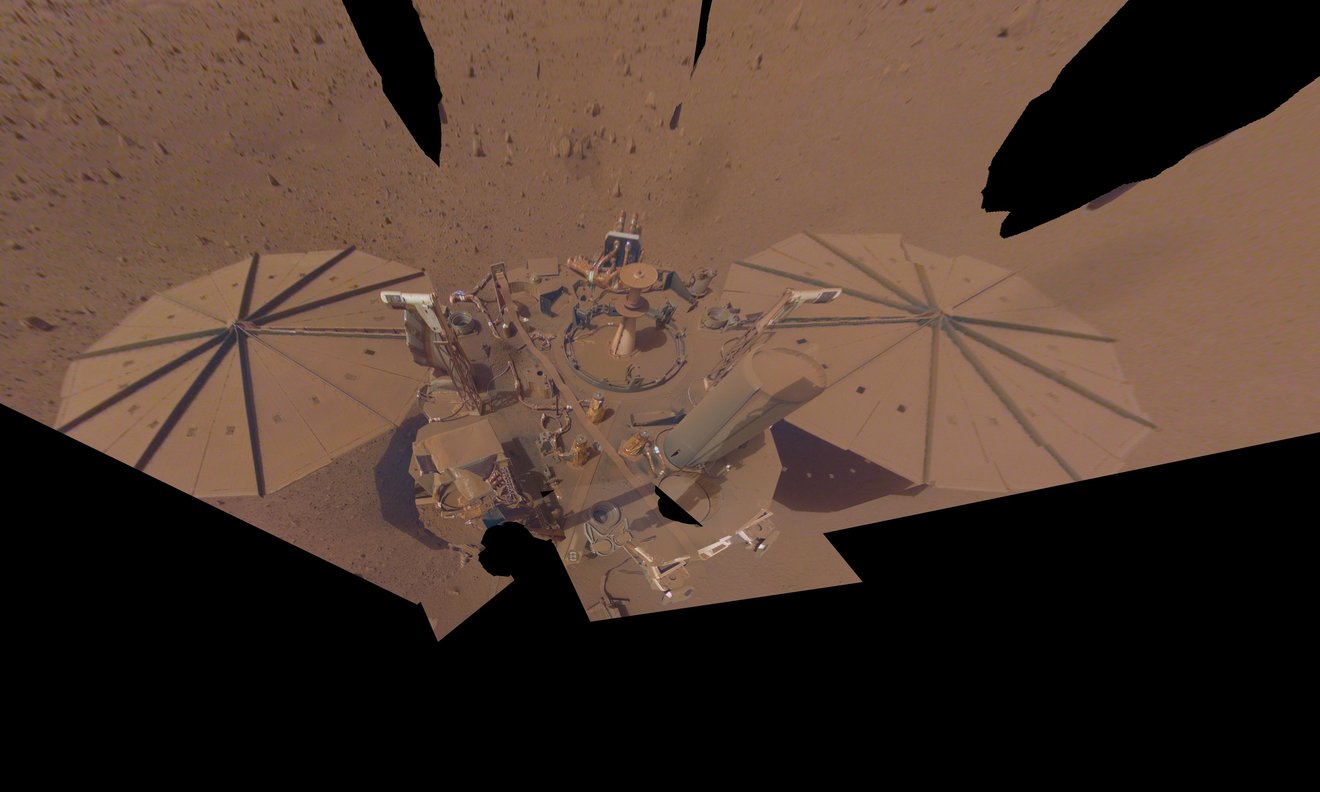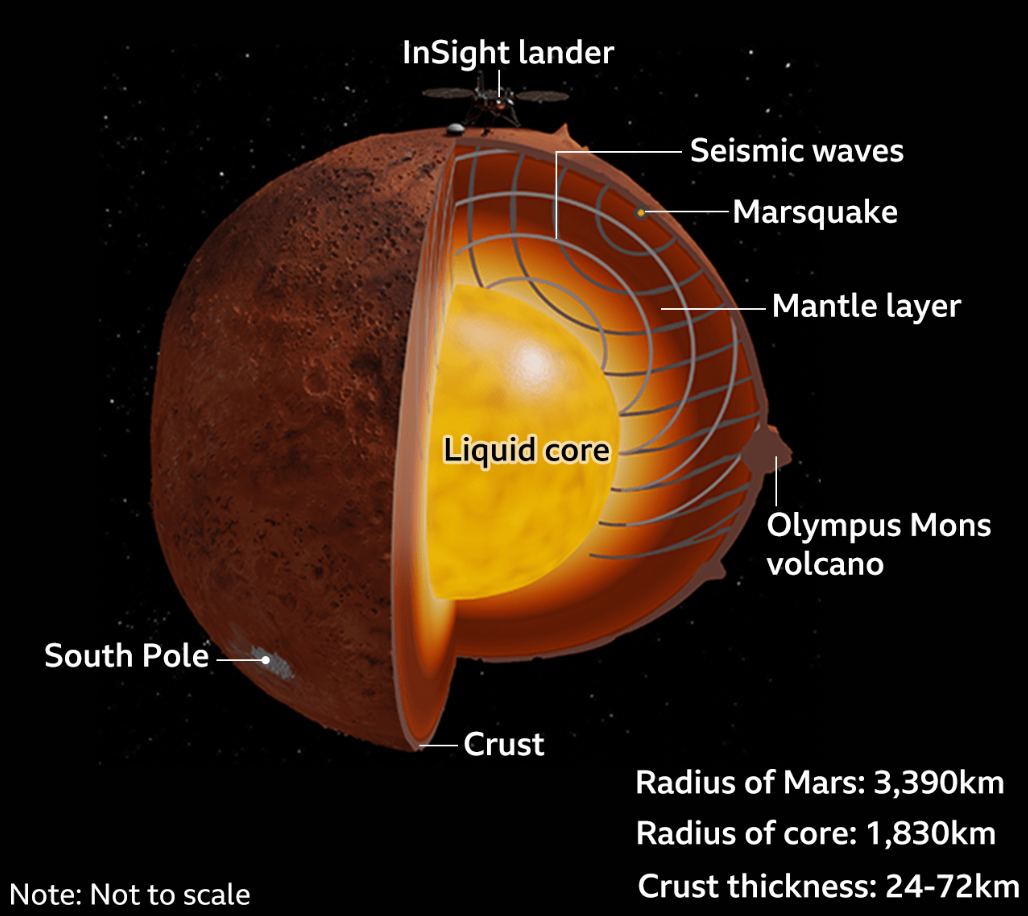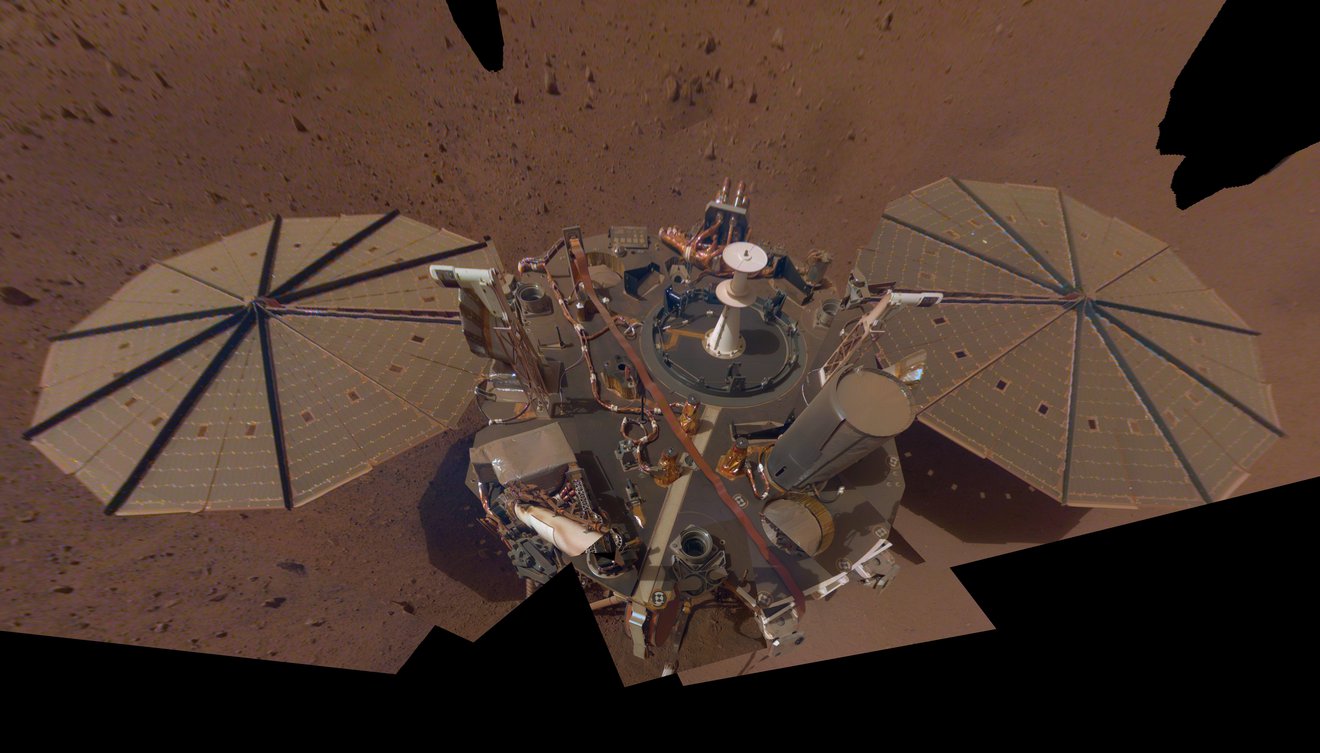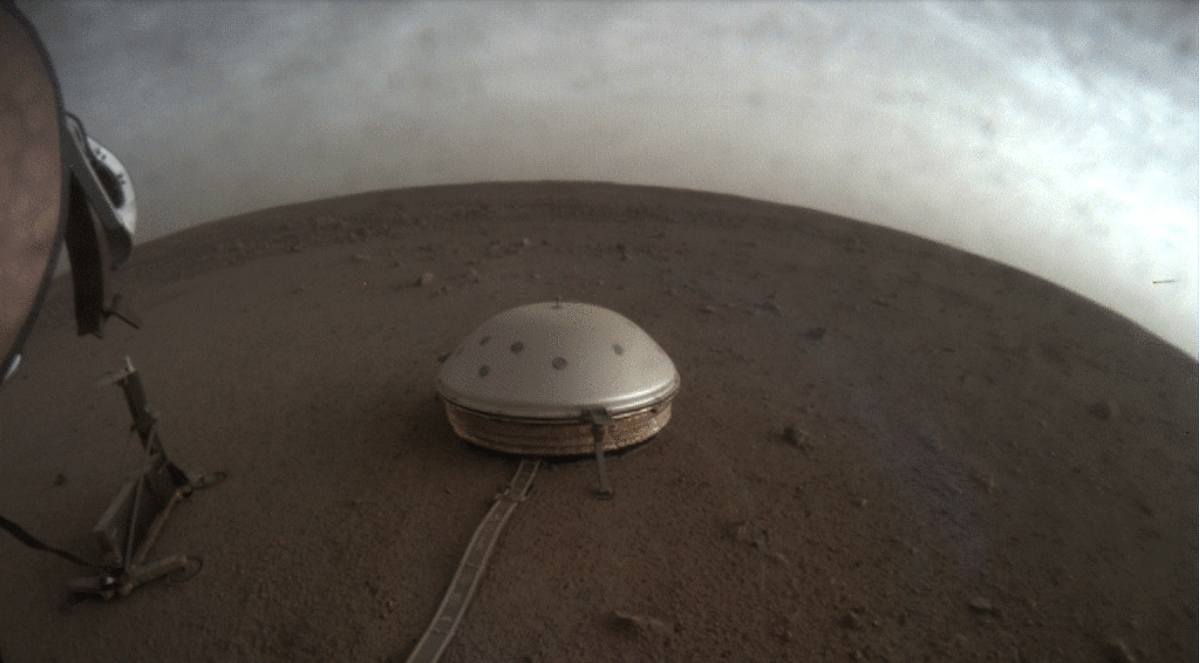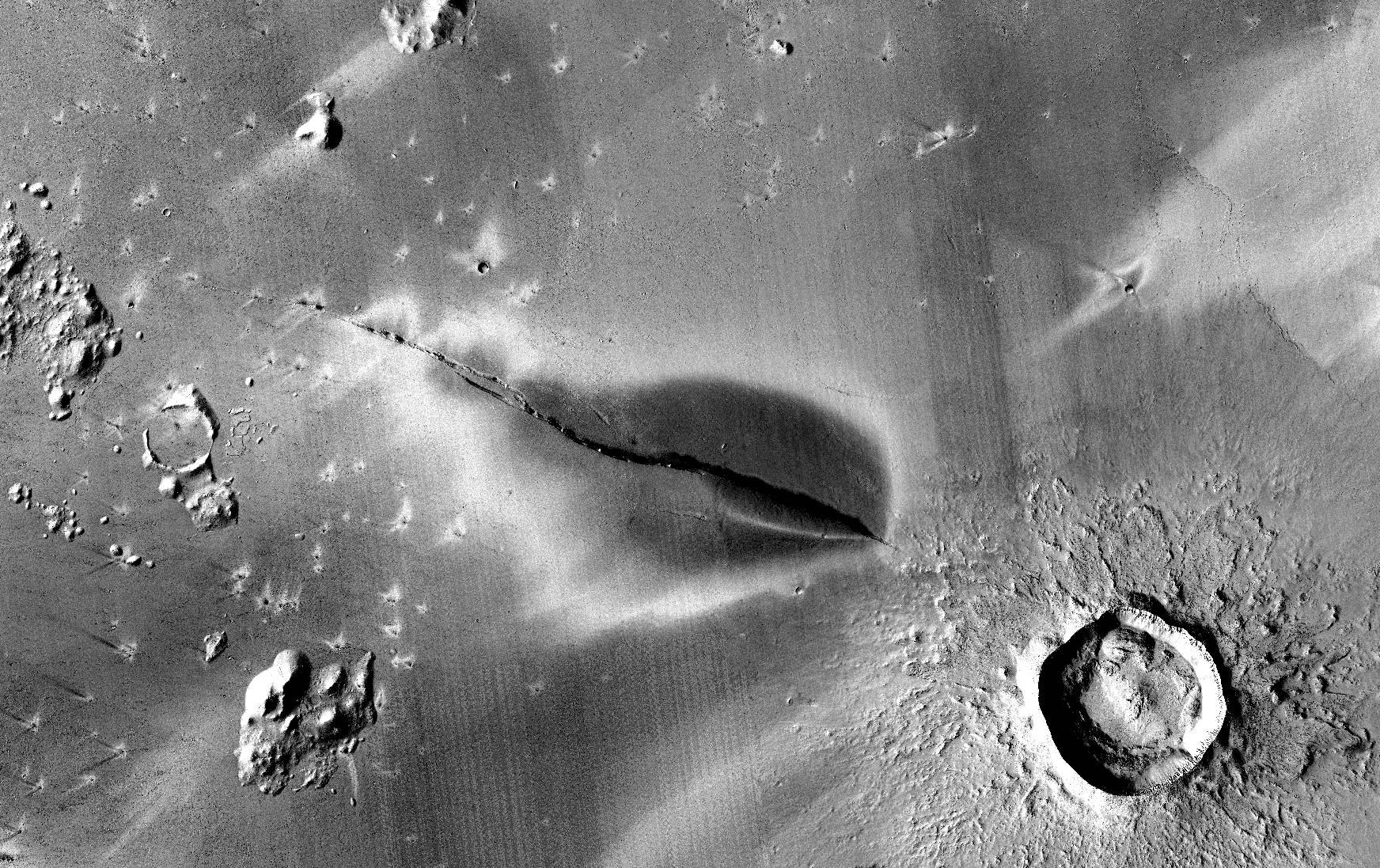How thick is the crust of Mars? This question is what a recent study published in Geophysical Research Letters attempted to answer as it reported on data from a magnitude 4.7 marsquake recorded in May 2022 by NASA’s InSight lander, which remains the largest quake ever recorded on another planetary body. As it turns out, this data helped provide estimates of Mars’ global crustal thickness, along with a unique discovery regarding the crust in the northern and southern hemispheres, and how the interior of Mars produces its heat.
Continue reading “Mars Has a Thick Crust. Its Internal Heat Mainly Comes from Radioactivity”Mars Has a Thick Crust. Its Internal Heat Mainly Comes from Radioactivity



